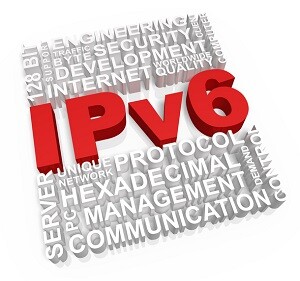 IPv6 Ready
IPv6 Ready
What is IPv6, and why should business owners care about becoming IPv6 Ready?
Internet Protocol version 6 (IPv6) is the new suite of network protocols superseding the current version of TCP/IP, which is now commonly referred to as IPv4. IPv4 is very well established, and just about every network device uses it, and every IT person understands it. IPv6 has existed since the early 2000s and has 128 bits in each address compared to 32 bits in IPv4.
All IPv4 addresses have been allocated to Internet Service Providers (ISP) who still have limited addresses for new circuits. ISPs have to manage their range very carefully and can often not service requests for larger blocks of addresses. IPv4 addresses would have entirely run out years ago except for careful management by ISPs and usage of NAT.
Business owners are mostly unaware of why they should consider becoming IPV6-ready or, for that matter, what that means. Often it is not causing them any apparent problems, and no one is telling them they need to upgrade. In most cases, not even their IT people are telling them to upgrade. Also, if they wanted to upgrade their Internet connection does not support IPv6.
Why is uptake so slow?
IPv4 is so well established that most IT people have not gained any experience or had any reason to learn about it. When IP addresses were initially allocated, the USA and Europe got the bulk of available IPv4 addresses. This forced other parts of the world into adopting IPv6 years ago, and they are, therefore, way ahead of the USA and Europe.
Training on IPv6, in my opinion, is more complicated. Many books on the subject are very theoretical, and implementing this technology in the real world is difficult for people with years of IPv4 experience. Some of what has been learned is outdated because the standards have evolved.
Many of the books are very poor, lacking real substance. I had always suspected some authors did not understand IPv6 when they wrote their early books.
Most ISPs don’t support IPv6 on broadband connections. Some have had pilots but have not implemented the technology for their clients. There are some very specialist ISP s which do offer IPV6.
More business-focused technologies like EFM, full-fibre and Ethernet usually offer IPv6 as an option which is an essential step to becoming IPv6-ready.
What is needed to upgrade to IPV6?
Commitment from business decision-makers and the money to make it possible.
Skilled staff.
Learning IPV6 takes time and effort. People who are experts in IPv4 are in some ways less able to learn IPv6 as there is always a comparison with IPv4, which they know so well. Many IT people acquire their skills in home labs, but as IPv6 is not available to most homes, this restricts the ability to learn in a non-business-critical environment.
Compatible equipment
Many manufacturers have been selling their products as IPv6-ready for years, but because of a lack of uptake, skilled engineers and changes to the standards, not all of these products are as stable as their IPv4 versions. When buying equipment, making the right choice is essential and has to consider manufacturer support and functionality before cost.
What are the benefits?
Virtually unlimited IPv6 addresses give true future-proofing. Unlike IPv4, IPv6 was designed from the ground up to include encryption, so it is more secure. New technologies allow better remote user access, which is also safe. Making web servers IPv6 compatible might benefit SEO as Google is already tracking which sites are IPv6 compatible.
Problems
Some equipment is not IPv6 compatible. Examples are older equipment or low-cost domestic equipment and some devices like Digital Video Recorders from manufacturers where networking is not their primary focus. Non-IPv6 Ready hardware is not a show stopper as modern networking devices are dual-stack, so will work with both technologies if configured correctly.
Some software is not IPv6 aware; for example, at the time of writing, 3CX was not IPv6 capable.
IT staff skills in IPv6 are generally low because few have had the opportunity to work with it.
It is possible to encapsulate IPv6 within an IPV4 packet, so using an IPv4 connection is possible, but this is more complicated and has a performance overhead.
Implementation
Moving to IPv6 is a complex task which requires meticulous planning and execution. Existing Internet connections will need to be either upgraded or possibly replaced with either a different technology or a different provider. When installing new connections, installing IPv6-compatible services will save changes later. When buying new equipment like routers, switches, printers etc., ensure they are IPv6-ready. All modern computers using Windows, Apple or Linux have been IPv6 compatible for years. Even Windows XP was IPv6 compatible.
It takes time to migrate. Once suitable connections and equipment are in place, migration can be planned. As this technology is still relatively uncommon, especially in the SME sector, testing for functionality and security is essential. Due to IPv6 not using NAT, firewall rules need to be planned very carefully.


